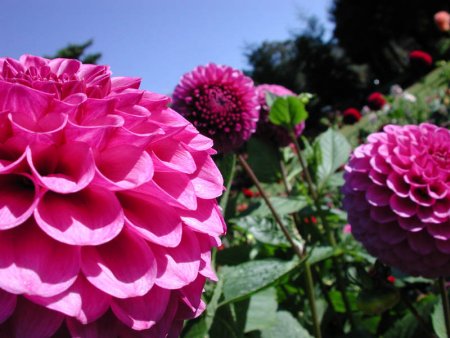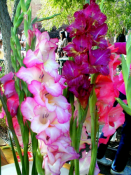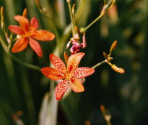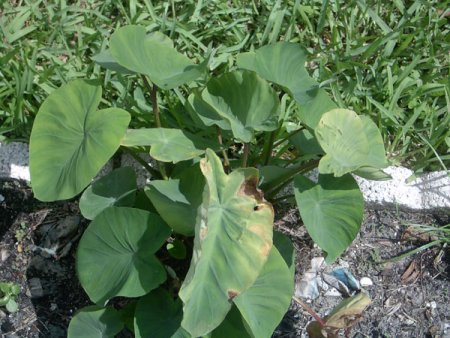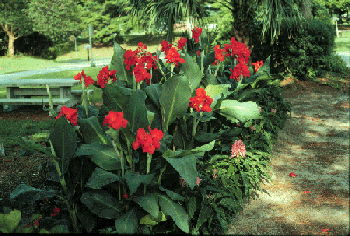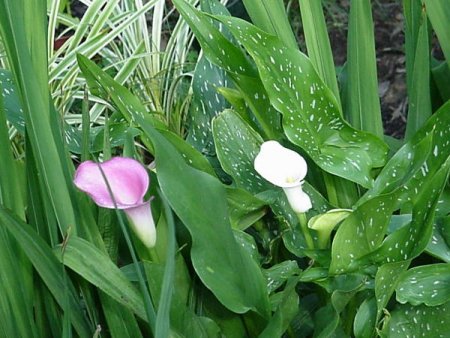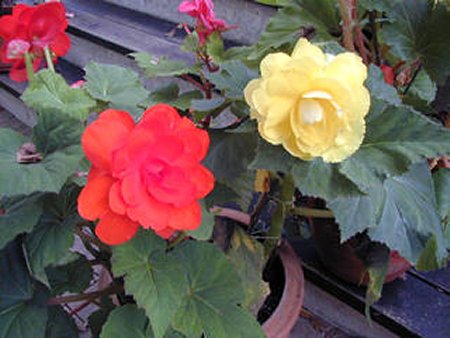
2005 Year in Review
Back to Page two: Other Listing | Back to Year in Review Index
Storing Tender Bulbs |
|
Source: Barbara Bates, Unit Educator, Horticulture, bbates@uiuc.edu Some of the most beloved garden plants grow from "tender bulbs," which means they need special care in the fall and winter, said a University of Illinois Extension horticulture educator. "Dahlias and gladiolas are examples of plants with tender bulbs," said Barbara Bates. "Tender bulbs are plants that are not hardy in the Midwest. These storage organs may include corms, tuberous roots, rhizomes, and bulbs. These plants should be dug up in the fall and stored in a cool place for the winter." Many summer flowering or tropical foliage plants are also classified as tender bulbs. These include Blackberry lilies (Crocosmia), elephant ears (Colocasia and Alocasia), cannas, callas, tuberous begonias and others. "It is recommended that the underground parts of these plants be dug after the first frost," said Bates. "A digging fork is less likely than a shovel to damage the storage organs. Disease organisms that cause decay can enter through wounds and bruises. "As you dig, keep bulbs separated by kind and color. Label these as you handle them so you'll know what you have when you get ready to design and plant next spring." Excess soil should be shaken off bulbs and corms, and then the stems should be cut off. Soil should be washed from the roots and the rhizomes by placing them on a mesh or screen and gently rinsing away the soil. After inspecting the bulbs for damage, discard any damaged ones along with the runts. "Corms such as gladiolas and callas should be cured before storing," she said. "Cure them by air-drying them at 60 degrees F out of direct sunlight for three weeks. After curing, remove the old shriveled corms at the base of the mother corm." Tender bulbs should be stored by layering them in a ventilated container. They should be layered with peat moss, sand, shredded newspaper, or sawdust. The stored bulbs should not be touching one another as this can lead to the spread of decay should it occur. "Check your bulbs several times during the winter to remove the rotting ones, and to check the moisture level," said Bates. "Bulbs that shrink and wrinkle are too dry. If this occurs, moisten the layering media a tad and re-pack them." Bates said storage temperatures should be between 40 and 50 degrees F. "Basements are often an ideal place, where rodents will be unlikely to get the stored bulbs," she said. "However, finished basements and utility rooms will likely be too warm. Put the bulbs near an outside wall, away from heat sources. An unheated garage or crawl space can work well. Be sure to store the bulbs in a 'mammal-proof' container." The tender bulbs will be ready to plant next spring, after the soil has warned. "For earlier display, start them indoors in pots to be transplanted later," Bates said. "Or use them as container plants." by Editor, theCity1.com |
|
Copyright © 2005 TheCity1.com.
All rights reserved
